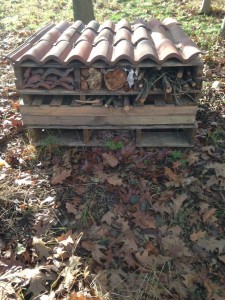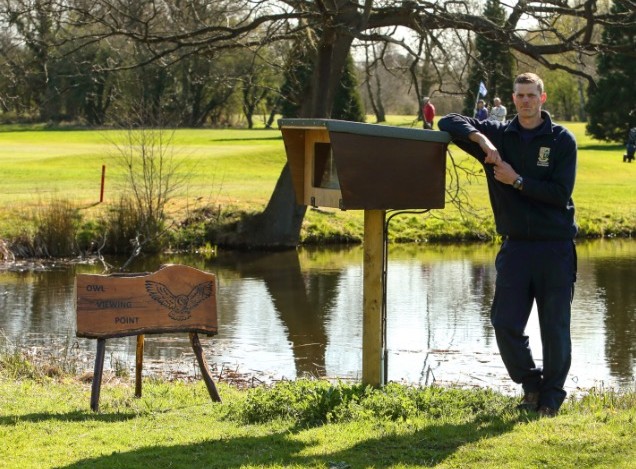Anthony Darker, Elsham Golf Club’s First Assistant and the Golf Environment Awards 2015 Operation Pollinator Winner, provides an insight into operating more sustainably within a golf course.
Changing the view of others
95% of the world’s population doesn’t play golf, and too high a percentage of that figure believe that golf courses are an elitist use of green space, which destroy valuable habitat, and contribute to the decline of pollinating invertebrates with our non-essential chemical applications and intense cutting regimes. Those are practices that we greenkeepers supposedly adhere to, to maintain high quality turf standards. We must endeavour to dispel this myth and demonstrate through improved communication that many of us employ cultural methods and aim to blend our courses seamlessly with the surrounding landscape, thus resulting in thriving habitat corridors.
Golfers and employees of golfing establishments must strive to collaborate on best practice to cease being viewed as keepers, owners and players of green deserts, which are playgrounds for the rich and famous. Fragmentation and isolated habitat pockets is a huge problem across the country, an unfortunate and probably unforeseen aftermath of the 70s and 80s building boom. Those intensive developments have left their footprint and it has become more difficult, and in many cases impossible, for wildlife to move freely.
Golf courses are in abundance in Britain and do in some cases present the only opportunity for accessible green space. Search the web for a map of Britain and focus in on any golf course you’re aware of, and it may surprise you to see just how many courses are in close proximity. Those adjacent lands offer natural wide scale habitat linkage and we, the custodians, have a unique opportunity to strengthen those corridors by working more closely together.
If I can ask my fellow turf and club professionals reading this article to take this on board for a moment – please consider making some slight changes to maintenance practices. Perhaps trial a relaxing of your cutting regimes in a few selected out of play areas. Have you reviewed spraying parameters recently? Minor changes such as these willcontribute considerably to combating fragmentation and help to secure a rich physical setting for Britain’s wildlife.
 Other areas worth exploring, which are based on my personal experience in the pursuit of sustainable golf at Elsham, are to pursue improved education of environmental issues both internally and to the wider public. Let us embrace the local community and encourage them to visit our golf courses, whether participating in the sport or simply taking in the breathtaking scenery over a coffee and a slice of cake in our clubhouses.
Other areas worth exploring, which are based on my personal experience in the pursuit of sustainable golf at Elsham, are to pursue improved education of environmental issues both internally and to the wider public. Let us embrace the local community and encourage them to visit our golf courses, whether participating in the sport or simply taking in the breathtaking scenery over a coffee and a slice of cake in our clubhouses.
You may already be aware that golf courses cover more area than designated nature reserves and that we can and already do offer a wider range of habitats, if managed correctly. All of this sounds like a big undertaking, requiring intensive labour hours to achieve the product that I’m describing.
However, you might be surprised to hear that this more sustainable approach will indeed save money, improve public perception and generate a positive interest by showcasing your club’s attributes – a terrific unique selling point, which I know will catapult your club into the eye of tour operators and the general public alike. Possible outcomes may very well be new business opportunities and increased visitor play or even new members.
No one can say for sure that operating more sustainably will generate more golf rounds and increased food and beverage covers; but in a marketplace where play and pay is readily available and club waiting lists are often a thing of days gone by, can you afford not to operate sustainably?
Perhaps try:
- Training staff in disease identification.
- Spread the word – hosting course walks for members and non-members.
- Introduce bird boxes and insect hotels in out of play areas.
- Monitor water and energy consumption and reduce where possible.
- Adhere to the principle of the waste hierarchy.
- Good traffic management.
- Introducing grass bays.
- Relaxing cutting regimes – reduces fuel consumption and are less labour intensive.
You may be forgiven for thinking that I, as the author of this article, am an expert in sustainable management, but this couldn’t be further from the truth. I am, in fact, simply a greenkeeper who is wildlife enthusiast. Everything that I have learnt up to this point has stemmed from my passion for the greenkeeping industry and the golf clubs that I’ve been employed by. My knowledge has been enhanced by my participation in the Golf Environment Awards and the network of people that I’ve met through my involvement.
It is my belief that by introducing some of the practices above you will be contributing to safeguarding the legacy of golf and our natural environment for generations to come.
Anthony Darker is First Assistant at Elsham GC.
By Mike Hyde



